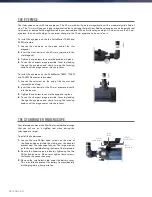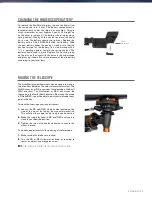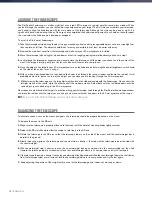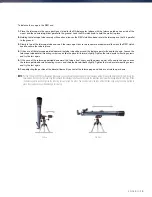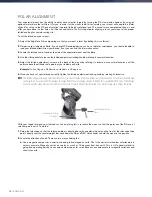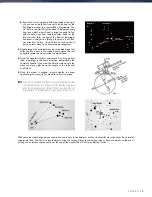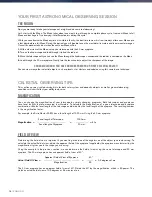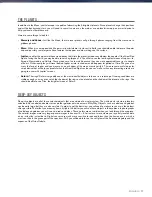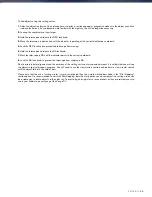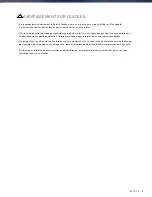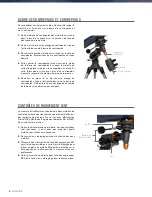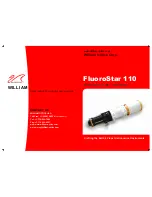
24
I
ENGLISH
A WORD ON SETTING CIRCLES
The Declination axis of the Celestial Sphere are broken down into degrees, minutes and seconds of arc At the Celestial
equator, the Dec coordinate is 0 degrees, with +90 degrees being the North Celestial Pole and -90 degrees being the South
Celestial Pole The Dec coordinate tells you how far north or south to go to find your target
Before you can use the setting circles to find objects in the sky you need to align the setting circles first When you polar
align the mount, you are actually aligning the DEC setting circle as well, so there is nothing more required for this one The
RA setting circle requires some additional information
On the RA setting circle there are two sets of numbers on the dial – one for the northern hemisphere (bottom) and one for
the southern hemisphere (top) In order to align the RA setting circle, you will need to be able to identify some of the brighter
stars in the sky You can use a star atlas or astronomy app to help you with this
To align the RA setting circle:
1 . Locate a bright star near the celestial equator The farther you are from the celestial pole the better your reading on the RA
setting circle will be
2 . Use your star atlas or you astronomy app to lookup the coordinates of the star you selected
3 . Center the star in the telescope’s eyepiece
4 . Without moving the telescope, rotate the RA setting circle until the RA indicator points at the RA coordinate of the star
you selected
NOTE:
The RA setting circle does
NOT
move as the telescope moves in RA, the setting circle must be aligned each time you want to use it to find an object. However,
you do not need to use a star each time. Instead, you can use the coordinates of the object you are currently observing.
Once the circles are aligned you can use them to find any object with known coordinates The accuracy of your setting
circles is directly related to the accuracy of your polar alignment
The celestial coordinate system is much like the latitude and longitude system that we use to map the Earth Just like cities
on a map have specific longitude and latitude coordinates, stars and deep-sky objects all have Right Ascension (RA) and
Declination (DEC) coordinates on the Celestial Sphere Your telescopes comes with two setting circles, one on the RA axis
and one on the DEC axis The setting circles are 3-inch diameter disks with graduated markings on them that can help you
locate objects in the night sky by their celestial coordinates
The celestial sphere seen from the outside showing R.A. and DEC.
Summary of Contents for ASTROMASTER EQ
Page 2: ......
Page 4: ...4 I ENGLISH ...
Page 26: ...26 I ENGLISH NOTES ...
Page 27: ...ENGLISH I 27 NOTES ...
Page 30: ......
Page 32: ...4 I FRANÇAIS ...
Page 54: ...26 I FRANÇAIS NOTES ...
Page 55: ...FRANÇAIS I 27 NOTES ...
Page 58: ......
Page 60: ...4 I DEUTSCH ...
Page 82: ...26 I DEUTSCH HINWEISE ...
Page 83: ...DEUTSCH I 27 HINWEISE ...
Page 86: ......
Page 88: ...4 I ESPAÑOL ...
Page 110: ...26 I ESPAÑOL NOTAS ...
Page 111: ...ESPAÑOL I 27 NOTAS ...
Page 114: ......
Page 116: ...4 I ITALIANO ...
Page 138: ...26 I ITALIANO NOTE ...
Page 139: ...ITALIANO I 27 NOTE ...

